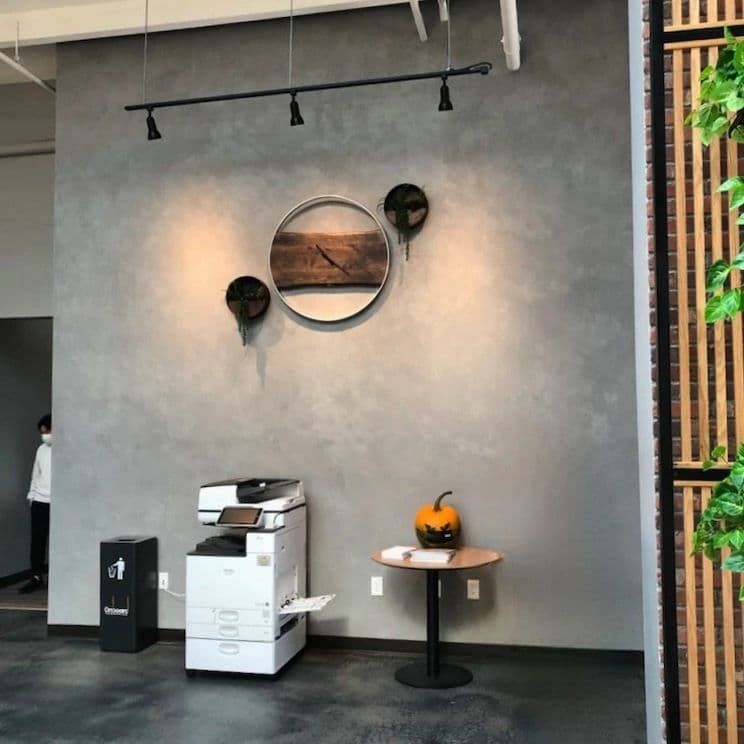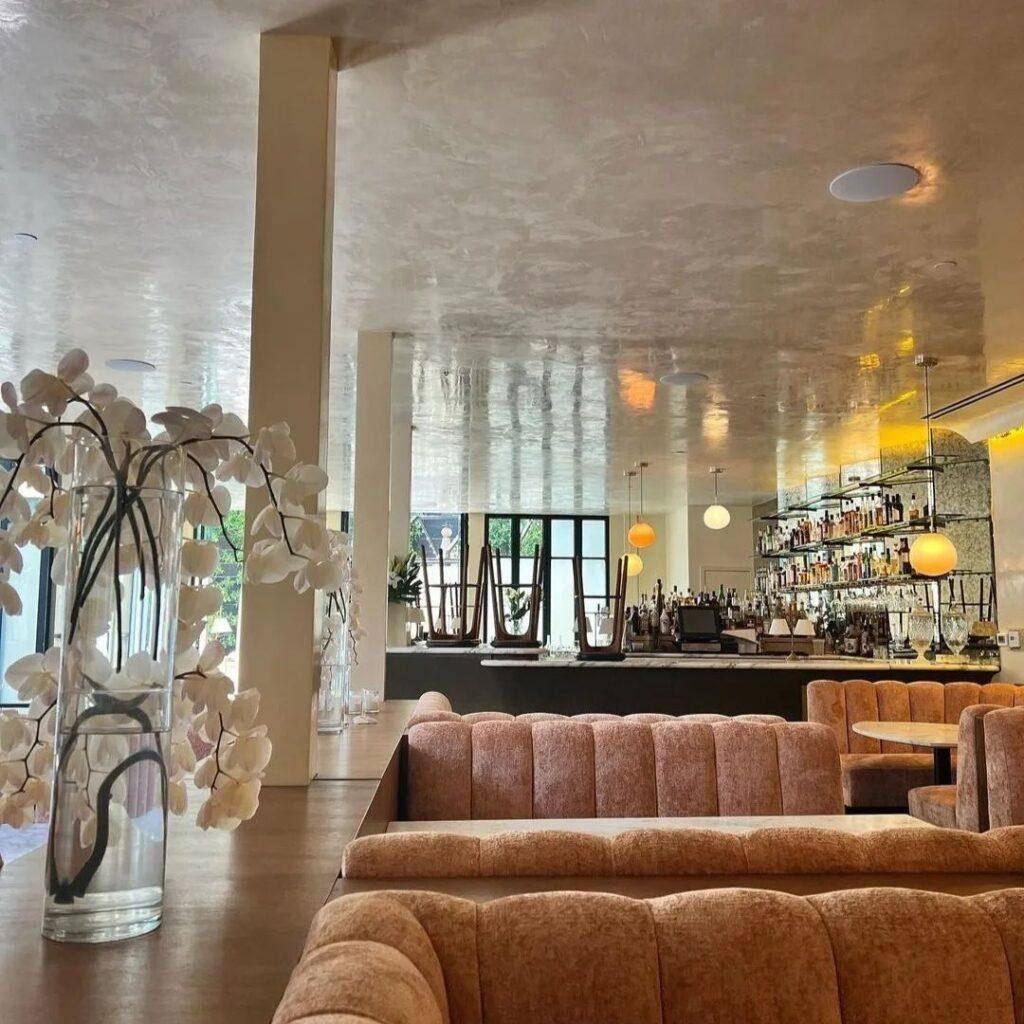Have you ever been to Venice, Italy? Or perhaps you’ve seen some fantastic movies or pictures of the beautiful city? If you have, you will notice that it has an antique feel and outstanding architectural styles. So, the widespread adoption of one of Venice’s most iconic decorative styles, namely Venetian Plaster, for walls and floors should be no surprise.
Venetian plastering (also known as Italian plastering) is the process of applying a marble-like finish to surfaces to give them a luxurious and polished appearance. Venetian plaster imparts a natural look and offers the illusion of texture and patterns, adding to its sophistication and style. Its adaptability provides a wide range of possibilities for adorning surfaces.
In this article, Venetian Plaster 101, we’ll discuss everything you need to know about Venetian plaster and why you should consider Meoded’s exclusive range of Venetian plasters to beautify your home or workspace.
Venetian Plaster 101: What is Venetian Plaster?
Before we dive into all the other bits of information about this popular wall and floor finish, let’s recap what Venetian plaster actually is.
In a nutshell, Venetian Plaster is a classic Italian wall plaster that has gained international acclaim for its exceptional aesthetic value. It comprises an environmentally friendly lime-based finish that may be used on both exterior and interior surfaces.
“Traditional Venetian Plaster, otherwise known as marble plaster, Italian plaster or polished plaster is made of lime putty and marble dust.”
Venetian Plaster 101: What Is Venetian Plaster Made Of?
Venetian plaster is a color-changing mixture of lime plaster, fine marble dust, water, and pigments such as oils and natural waxes.
What Is the Venetian Plaster Application Process?
Venetian plastering is a centuries-old technique that you can do at home. Since this is a do-it-yourself project, your priority should be safety. It’s recommended that you wear gloves and eye goggles. It would be best if you also covered the floor with paper or a drop cloth to prevent damage.
First, gather the materials and tools listed below.
- Venetian plaster
- Gloves
- Goggles
- Overall
- Water bucket
- Wax
- Spatula
- Trowel
- Drop-cloth
- Dusk mask
- A mud pan
Begin by preparing the surface before applying Venetian plaster. Smooth out the wall and remove any existing wallpaper. In the case of holes and cracks, you must fill them in. The Venetian plaster will be applied in three coats (Although some manuals recommend applying more or fewer coats depending on the desired finish)
Foundation Coat
- Take out the necessary plaster and lay it in a pan. Use a trowel or a spatula to apply the first coat.
- Smooth out the plaster evenly.
- To make it as smooth as possible, apply it in lengthy and quick motions. It is also essential to apply the base coat as thinly as possible.
- Apply the plaster and make certain that all free spots are filled. Allow at least an hour for it to dry after application.
The Second Coat
- When the surface is dry, begin applying the second coat of plaster. However, before you begin, remove any extra plaster that is causing the surface to be rough and uneven. You can then go back to step one and apply the second layer. Use a clean trowel or spatula for this. If not, keep a warm water bucket nearby to clean the spatula. This decreases the possibility of surface scratches.
- Allow the coat to dry entirely before applying the third coat.
The Third Coat
- The last coat of Venetian plaster can be applied by firmly pressing the spatula to give the surface a smooth finish. The last coat is where you can customize the surface.
- Allow the surface to dry before inspecting for scratches. Once you’ve achieved the desired result, burnish the surface by lightly brushing away any remaining bits of plaster in small circular movements to smooth it.
- To remove plaster dust, use a clean sponge.
Top Tip:
Utilize a small spatula to apply a thin coating of wax to the surface to get the desired gloss. Allow at least a week for the surface to dry thoroughly.
Venetian Plaster 101: Types of Venetian Plaster Finishes
The addition of an excellent finish is the icing on the cake of the Venetian plaster application. You can apply several finishes, some of which are as follows:
Concrete-Like Finish
As the name implies, this finish provides surfaces with a natural concrete appearance. It is primarily appropriate for business environments.

Sand Finish
The Tonachino Firenze coating is naturally mold and bacteria-resistant. This is due to the water-resistant substance utilized in its construction. It has a soft velvet and sandy appearance and is appropriate for indoor and outdoor décor.
Polished Finish
This Venetian plaster finish, also called polished plaster, uses wax to create a sumptuous and elegant pattern. It has a glass-like radiance that gives a space a bright and colorful ambiance.

Stucco Lamundo
The natural blend of marble dust and limestone gives Stucco Lamundo a distinct glossy look with easy application.
Marmorino
Finally, there is the Marmorino, which comes in two varieties:
- Marmorino Tintoretto is a flat to a low sheen finish Venetian Plaster suitable for interior and exterior applications.
- Marmorino Palladino has a large marble grain and is best for creating elegant, smooth stone finishes and other creative textures.
Where Can You Use Venetian Plaster Around the House?
Venetian plaster may be utilized in various ways to bring a touch of elegance to a property. For starters, the living room is a terrific place to begin.
Venetian plaster will also add timeless beauty to the kitchen, bedroom, and bathroom. Corridors may also benefit from Venetian plaster, bringing them back to life.
The Benefits of Using Venetian Plaster in Your Home
Aside from the stylish and beautiful appearance, it provides surfaces, using Venetian plaster instead of alternative treatments has several benefits:
• It controls humidity
This is possible because Venetian plaster enables moisture to pass through and cools surfaces, resulting in a less hot and humid environment.
• Its alkaline composition inhibits mold growth on its surfaces
This is due to the lime used in its production.
• Venetian plaster is odorless
Unlike paint, which has a lasting odor, Venetian plaster is odorless since it is manufactured from natural materials.
This also renders the plaster non-toxic and environmentally friendly. (We cannot emphasize this enough, particularly for those battling climate change and attempting to save the environment!)
• It requires less upkeep
Venetian plaster does not require any maintenance; simply wipe it clean with a rag and warm soapy water, and it will seem like new. (No harsh chemicals should be used to clean plaster!)
Venetian Plaster 101: Upkeep and Care
Venetian plaster is well-known for its durability and low maintenance. However, to keep its elegance and durability, it must be cleaned on a regular basis.
Cleaning and preserving Venetian plaster is dependent on the surface’s properties. Depending on the finish used, it may or may not be washable. Because waxed and polished surfaces are waterproof, you can use water and neutral cleaning agents on them.
Avoid using alcohol-based cleaning chemicals, which can scar the surface. Even if the surface is waterproof, do not leave it wet.
On the other hand, water cannot be used to clean a surface that does not have a wax finish. In this case, a non-abrasive cloth, such as a cotton cloth, can be used to wipe the surface gently.
Venetian Plaster 101: Frequently Asked Questions
Is Venetian Plaster Expensive?
Venetian plaster costs vary depending on the finish and characteristics. Some Venetian plasters can be pricey, but considering the benefits of Venetian Plaster, the investment is worth it.
Does Venetian Plaster Crack?
Venetian plaster does crack, however, it takes longer to get to that point. Poor mixing, tension, and expansion can all lead to cracks. They can, however, be restored because plastering is done in stages.
How Long Does Venetian Plaster Last?
Venetian plaster lasts for decades, if not centuries when applied to interiors.
Is Venetian Plaster Good For Bathrooms?
Waterproof Venetian polished plaster is appropriate for bathrooms.
Create an atmosphere of elegance with Meoded’s Venetian Plaster
Meoded is an industry leader in Venetian plastering, offering our services to both commercial and residential clients.
We only use high-quality materials that are eco-friendly, antibacterial, and volatile organic compound (VOC)-free so that you can relax in your home and savor the beauty of your plastered walls and ceilings every day.
There is no limit to what you can create. We are excited to work with you to make your dreams a reality!
Want to continue your Venetian plaster 101 learning journey? For a first-hand look at how to use and apply any of our Venetian plasters, be sure to check out our Instagram page. You can also head over to our Youtube channel for handy how-to tips and tricks.

